 I have a question about OTA (operational transconductance amplifier). Why can an OTA can be used without negative feedback but would still be able to keep its inputs (V+, V-) close each other? I have seen in certain buck converter topologies that it’s possible to use for the error amplifier in the feedback loop -- either a voltage amplifier with a compensation network in the feedback loop or an OTA with a compensation network at its output. How is that possible? For example in the picture below the error amplifier use to keep vout of the buck to be desired voltage is an OTA without negative feedback around it but others architectures uses opamp with negative feedback loop
I have a question about OTA (operational transconductance amplifier). Why can an OTA can be used without negative feedback but would still be able to keep its inputs (V+, V-) close each other? I have seen in certain buck converter topologies that it’s possible to use for the error amplifier in the feedback loop -- either a voltage amplifier with a compensation network in the feedback loop or an OTA with a compensation network at its output. How is that possible? For example in the picture below the error amplifier use to keep vout of the buck to be desired voltage is an OTA without negative feedback around it but others architectures uses opamp with negative feedback loop
- 144
- 6
-
1Transconductance amps that are built with op amps have negative feedback. Can you include an image of the one you're talking about?? – Scott Seidman Aug 18 '23 at 18:21
-
1You mean a second (inner) feedback loop? Because the error amplifier in a buck converter is within an overall feedback loop. – Spehro Pefhany Aug 18 '23 at 18:24
-
You say it is "without negative feedback", yet you show a PWM generator and buck converter section in the feedback path; you are misunderstanding something here. – Tim Williams Aug 18 '23 at 19:31
-
I mean only the transconductance amplifier have no feedback loop … not the external voltage loop of the buck – AnalogMan Aug 18 '23 at 20:11
2 Answers
Here is an error amplifier using an op-amp.
You'll note that there is no DC feedback due to the two capacitors, the feedback is for compensation purposes.
Similar behavior using an OTA:
Images from this TI application note, which provides more information on why we want that particular transfer function.
- 376,485
- 21
- 320
- 842
-
Your remark on the dc feedback is interesting: with the op-amp based compensator - the type 2 you've shown - the resistive divider plays a role at dc because there is no virtual ground in absence of local feedback. However, at higher frequencies, the loop is closed by the caps and there is a virtual ground, excluding the low-side resistance from poles-zero calculation. On the opposite, with the OTA-based compensator, there is no virtual ground and the division ratio - together with \$g_m\$ plays a role in the determination of the transfer function. – Verbal Kint Aug 18 '23 at 20:12
-
But as there is no DC feedback how is it possible to have the relationship V+=V- in case of an opamp – AnalogMan Aug 18 '23 at 20:12
-
1@AnalogMan Because the loop is closed through the converter. The feedback voltage from the output equals the reference voltage or the converter changes the duty cycle. If you break the converter (maybe you remove or short the switch or remove the inductor) then the op-amp or OTA can no longer balance its inputs- it will forlornly call for maximum or minimum but nothing will happen. – Spehro Pefhany Aug 18 '23 at 20:17
-
1The loop is always closed by the resistive divider but the open-loop gain depends on the division ratio. Have a look at slide 16 in my [APEC 2010](http://powersimtof.com/Downloads/PPTs/Chris%20Basso%20APEC%20seminar%202010.pdf) seminar. – Verbal Kint Aug 18 '23 at 20:17
-
1
The error amplifier does have the negative feedback loop via the PWM generator and the synchronous buck converter in series: the error amplifier input is connected to the converter output; the error amplifier output is fed to the PWM generator. You can see these connections in the figure you provide in your question (notice that the StackExchange policy requires to indicate the source of the media you use in your questions and answers and clipping/scaling the original does not exonerate you from complying with this requirement). See also Figure 2, The control diagram for the synchronous buck converter with transconductance amplifier*. Figure 2 is found in same document, Infineon's AN-1043, which you used to borrow the image for your question.
As concerns intercomparison of OTA-vs-opamp use for the error amplifiers, notice the evolution of synchronous PWM controller ICs for Buck converters. The error amplifier of IRU3037/3038 ICs (the year 2010) is a differential-input transconductance amplifier, the error amplifier of IR3840 series ICs (the year 2012) is a voltage type high-gain (110dB), high gain-bandwidth (30MHz) amplifier, i.e., operational amplifier.
I won't bore you with my guess about why the developers switched from OTA to OpAmp. (Notice still that one of three authors of Infineon's/International Rectifier's AN-1043 is also the author of the AN-1162 document). Rather, let me show simulations that compare the circuits using these type amplifiers.
The simulation model embracing PWM controller and buck converter being maybe an overkill for the OP question, the simple circuits with generic OTA and OpAmp amplifiers in inverting configurations are still useful for someone aiming to take a grasp of transients in the error amplifiers. LTspice does not feature the periodic steady state analysis, but, fortunately, with the typical initial conditions for closed-loop amplifier circuits, LTspice's .tran simulation runs do not immediately enter into a periodic steady state. When excited with a periodic signal source, the transient simulation run begins with the system first gradually approaching its periodic steady state and only after some time the output waveform becomes purely periodic.
The feedback loop in these circuits is not one of the compensator networks shown in the AN-1043, AN-1162 error amplifiers. The C1/R2 network represents feedback signal delay that occurs when the signal passes the PWM generator/Buck converter. With the generic OTA (an LTspice 'mota8' component) and the generic opamp ('UniversalOpAmp4'), the transfer function at 20kHz is defined by C1/R1/R2 and C2/R5 components in both circuits. You can examine the transfer functions performing .ac analysis. I have selected the component values so that the zero crossover frequency Fo is five times lower than the "switching" frequency 20 kHz (the V3 sine source frequency), and the signals visibly approach their periodic steady state waveforms in the course of simulation run (1ms):
Agreed, this behavior has little in common with the switching regulator behavior, but, as concerns closed-loop configurations, you can easily see that the OTA and opamp circuit behavior can be made identical by adjusting component values.
It is the expected confluence, because operational amplifier has OTA as its first stage. If the amplifiers operate in the frequency range where the other opamp stages have no noticeable effect on the transfer function, you can simply convert the OTA's current output to voltage and have the identical waveforms in both circuits.
The differences appear when one starts to develop practical designs. In the section on compensator design, the AN-1162 document advises the switching converter developers: to avoid running into the gain-bandwidth-product limitation of the error amplifier, it is recommended to design for a lower loop bandwidth. Vice versa, the recommendation for the ICs developers could be to provide the gain-bandwidth-product that large as to alleviate this limitation for the switching converter developers.
If the IC developer prioritizes the task of creating a low-offset, low-noise, high-speed opamp for the error amplifier over suitability for the purpose, the developer can produce the design as good as OP227. But let us test the opamp as good as OP227 in our test circuit:
The circuit is unstable. Agreed, the frequency compensation trick is simple here:
giving the waveform
but it requires an effort to provide stability in all cases and may be not that simple in practice.
For the OTA implementation, we can try and use the well-established (in audio circuits) LM13600 OTA. LTspice does not provide LM13600 spice model, but fortunately Don Sauer from San Jose provided the model and accompanied it with enjoyable reading on the subject in an amazing online web document A MORE ACCURATE LM13700 SPICE SUBCIRCUIT. A github user, deanm1278, created a symbol for LTspice for use in the GUI.
You can examine the LM13700 behavior with .tran and .ac analyses.
I hope these references and simulations are helpful for grasping intercomparisons of using OTAs and opamps in error amplifiers and have a potential to inspire students of the subject to use these sources when developing the simulation models and practical implementations of synchronous switching regulators.
- 3,521
- 7
- 10
